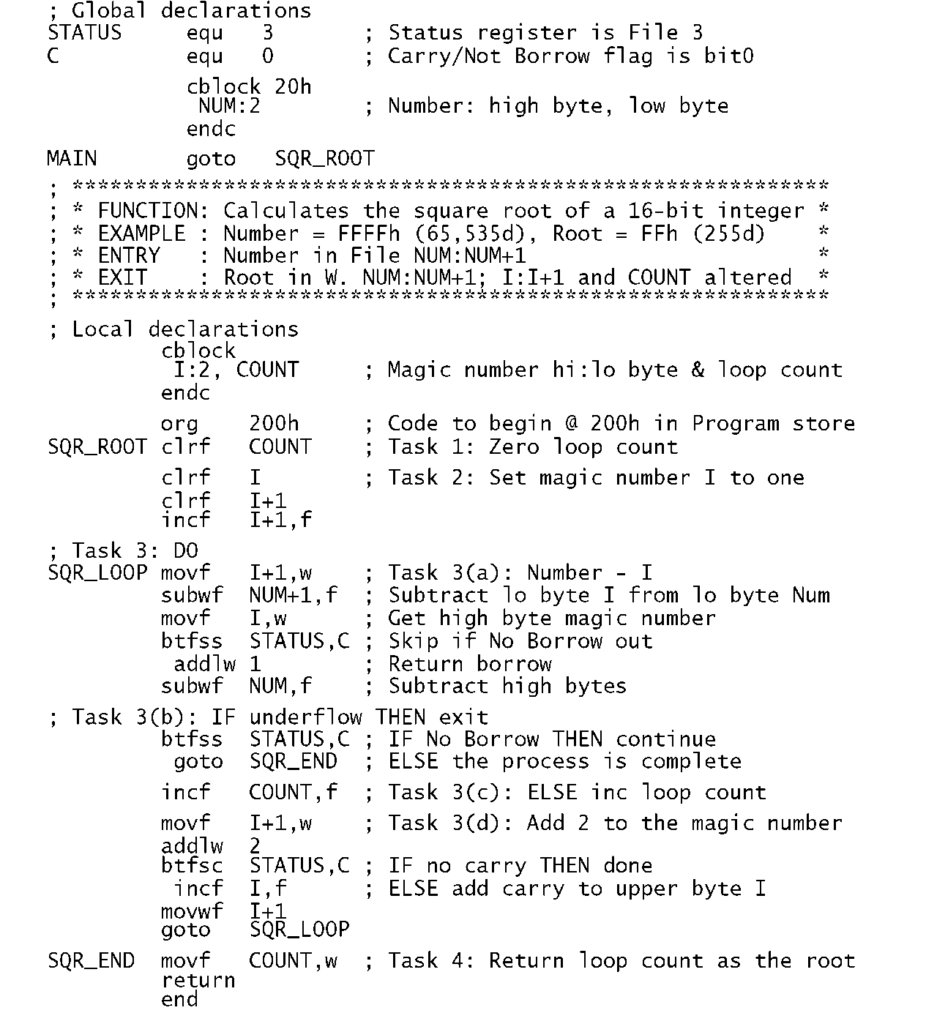The Art of Efficient Programming in Assembly

Introduction
Assembly language, a low-level programming language, provides direct access to the underlying computer hardware. Mastering assembly programming enables developers to optimize code for speed, memory usage, and performance.
Best Practices for Efficiency

1. Optimize Memory Usage:

- Use small data types (e.g., byte, word) where possible.
- Allocate memory efficiently using stack frames and registers.
- Avoid global or static variables to reduce memory fragmentation.
2. Optimize Instruction Selection:
- Use shorter instructions whenever possible (e.g., inc instead of add).
- Replace multiple instructions with single instructions (e.g., mov instead of push and pop).
- Utilize hardware-specific instructions (e.g., SSE for floating-point operations).
3. Optimize Looping Constructs:
- Use small loop counters to minimize overhead.
- Consider using unrolled loops for small iterations.
- Use efficient loop termination conditions.
4. Register Management:
- Use registers judiciously to reduce memory access.
- Allocate registers for frequently used variables.
- Save and restore registers as needed to preserve their state.
5. Conditional Execution:
- Use branch instructions judiciously to avoid unnecessary jumps.
- Consider using flags or condition codes for efficient branching.
- Utilize jump tables for quick branching to specific addresses.
6. Pipeline Optimization:
- Avoid stalls in the instruction pipeline by balancing instruction execution.
- Use prefetching and buffering techniques to improve instruction fetch time.
- Utilize superscalar processors to execute multiple instructions concurrently.
7. Vectorization:
- Use vector instructions (e.g., SSE) to process multiple data elements in parallel.
- Optimize vector loop structures for performance.
- Utilize hardware-specific vectorization capabilities.
8. Cache Optimization:
- Use cache-friendly data structures and algorithms.
- Minimize cache misses by optimizing memory access patterns.
- Utilize prefetching instructions to improve cache hit rates.
9. Multithreading and Concurrency:
- Take advantage of multi-core processors by using multithreading techniques.
- Utilize synchronization mechanisms to avoid data corruption.
- Optimize thread scheduling for efficiency.
10. Code Profiling:
- Use profiling tools to identify performance bottlenecks.
- Analyze assembly code to pinpoint areas for optimization.
- Continuously refine and optimize code based on profiling results.
Conclusion
Efficient programming in assembly requires a deep understanding of the underlying hardware and careful attention to performance optimizations. By following these best practices, developers can create code that maximizes speed, memory usage, and overall performance. Mastering the art of efficient assembly programming empowers developers to push the boundaries of computing and achieve unparalleled performance.## The Art of Efficient Programming in Assembly
Executive Summary
Assembly programming, the most fundamental programming language, has been instrumental in the development of computational devices. This article will guide you through the intricate world of assembly programming, from its origins to modern-day applications. By exploring the fundamental concepts, tools, and techniques, we’ll illuminate the art of efficient programming in assembly, enabling you to master this powerful language.
Introduction
Assembly programming, the precursor to all high-level programming languages, operates on a rudimentary level, interacting directly with the hardware. Its instructions, represented as mnemonic codes, mirror the instruction set of the target processor, granting programmers unprecedented control over system resources. Assembly programming empowers developers to optimize code execution, maximizing performance in applications that demand unparalleled efficiency, such as operating systems, embedded systems, and real-time applications.
FAQs
1. Why should I learn assembly programming?
Assembly programming provides an in-depth understanding of computer architecture, enabling programmers to optimize code for specific hardware platforms. It empowers developers to create highly efficient and customized software, fostering a deeper understanding of the underlying operations of computers.
2. What are the prerequisites for learning assembly programming?
A grasp of basic computer architecture, data structures, and algorithms is essential. Familiarity with a high-level programming language like C or Java can also facilitate the transition to assembly programming.
3. What tools are necessary for assembly programming?
An assembler, a program that converts assembly code into machine code, is indispensable. Additionally, a text editor, debugger, and knowledge of the target processor’s instruction set architecture are crucial.
Subtopics
1. Assembly Language Fundamentals
Assembly language is a low-level programming language that mirrors the instruction set of a specific processor. It offers direct access to hardware resources and provides meticulous control over code execution. Assembly language instructions manipulate registers, perform arithmetic and logical operations, and control program flow.
2. Data Representation
Assembly programming requires a thorough understanding of data representation. Data can be stored in various formats, such as integers, floating-point numbers, and strings. Programmers must be aware of the size, alignment, and endianness of data types to ensure efficient memory usage and accurate data manipulation.
3. Instruction Set Architecture (ISA)
The instruction set architecture defines the repertoire of instructions that a specific processor can execute. Each ISA has its own unique set of instructions, addressing modes, and register configurations. Understanding the ISA is crucial for writing efficient assembly code that leverages the processor’s capabilities.
4. Assemblers and Linkers
Assemblers translate assembly code into machine code, while linkers combine multiple object files and libraries to create an executable program. Assemblers provide directives to manage code layout, handle macros, and control program flow. Linkers resolve external symbols and generate relocatable code that can be loaded into memory for execution.
5. Debugging Assembly Code
Debugging assembly code can be challenging due to its low-level nature. Debuggers are essential tools that allow programmers to step through code, inspect register values, and identify errors. Additionally, unit testing and code reviews can help prevent and uncover bugs.
Conclusion
Assembly programming remains a cornerstone of efficient software development, empowering programmers to optimize code execution and create highly customized applications. By understanding the fundamental concepts, tools, and techniques outlined in this article, you can master the art of efficient assembly programming, unlocking the full potential of this powerful language. Embrace the challenge and delve into the intricacies of assembly programming to unlock unprecedented control over your software creations.
Keywords
- Assembly Programming
- Instruction Set Architecture
- Data Representation
- Assemblers
- Debugging
